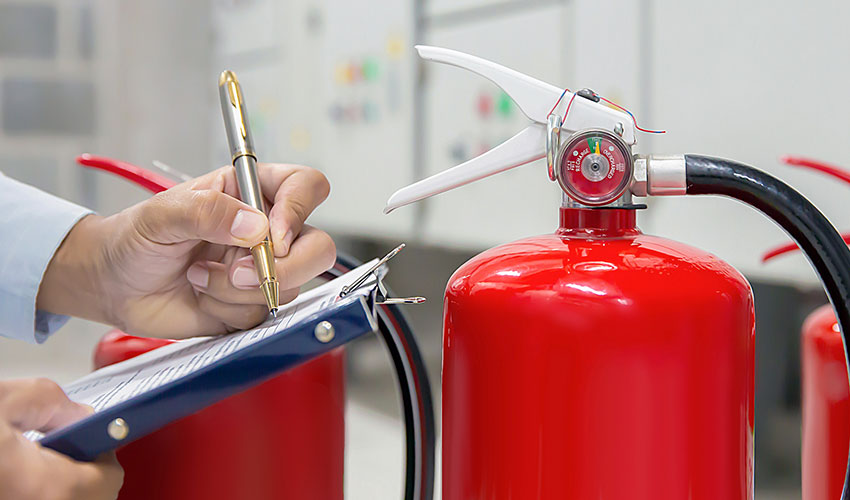Property fires: Threats and preparedness
Creating a fire prevention plan for your business

Whether it’s caused by flammable materials, arson or mother nature, fire can pose a devastating threat to your commercial property. Indeed, according to the National Fire Protection Association (NFPA) there were 481,500 structure fires in the United States in 2019, causing $16.7AUD billion in property damage.1
Knowing the risks and having a fire prevention plan can make the difference between continuing business operations and financial collapse.
Common fire risks facing businesses
- Hot work: Work such as brazing, cutting, grinding, open-flame soldering, welding, and torching all fall under the term “hot work” and can ignite combustibles with disastrous results. Hot work operations introduce a variety of potential ignition sources that require strict supervision.
- Ignitable liquids: Fuels, solvents, thinners, cleaners, adhesives, paints, waxes, and polishes — common in many industrial facilities — are often flammable or combustible.
- Intentional fires: Deliberately set fires, also known as arson, are often costlier than accidental fires. This can be due to the business location being unoccupied at the time, the arsonist using several points of ignition, the deliberate impairment of fire alarms and sprinkler systems, or by the fire being accelerated by flammable liquids or other agents.
- Bushfires: Increasing temperatures, lower precipitation and humidity levels, and high winds are conspiring to cause more frequent and severe bushfires each year. In fact, recent studies predict that the number of large, high-intensity fire events will increase globally, in part due to a 20-50% increase in the number of days when conditions are conducive to fires.2

Fire mitigation for businesses
Fire threats are omnipresent for business owners, but technology, training, and preparedness can help lessen the loss associated with fires. Consider the following when developing a fire prevention plan:
- Install and maintain a fire detection system: Modern technology can help prevent fires or limit the destruction caused by an ensuing fire so make sure to find the right system for your business:
- Local alarm systems notify building occupants through the notification appliances.
- Proprietary alarm systems are monitored at a constantly attended location within the facility where the system is located.
- Remote supervising stations provide monitoring at a constantly attended location under control of the building owner at a location separate from the facility.
- Central stations provide monitoring using a third-party company. They are known for reliability for monitoring alarms and notifying proper authorities.
- Manage hot work hazards: Preventing hot work fires requires careful implementation and enforcement of a written Hot Work Safety Program. Management should designate a hot work Permit Authorising Individual (PAI), who is trained in hot work safety measures and is responsible for issuing permits.
- Pre-fire planning: Good pre-fire planning gives your fire station better situational awareness as they can refer to your plan at the time of an emergency. But how does a company create a best-in-class pre-fire plan?
- Provide the fire station detailed information about the business property. This will aid them in conducting their firefighting operations, especially if protective gear or equipment is necessary for fighting fire. Include: floor plans; aerial photographs of the property; the number of occupants; information on electrical, gas and HVAC systems; information on sprinkler and fire alarm systems; a list of hazardous materials in the building; and key holder or responsible party contact information.
- Hold routine fire drills to assure that occupants know how to quickly and safely evacuate the building.
- Identify equipment that needs to be shut down in order to limit damage if there is a fire. Building owners should identify these to the fire department so they understand what to do in an emergency situation.
- Business continuity planning: A business continuity plan provides a framework for returning to normalcy following a disaster. It is a key tool in protecting business revenues, your company's reputation, recovery costs, and even people’s lives. It generally covers the following key areas. Make sure your plan includes emergency response procedures for fires.
1 Insurance Information Institute, Facts & Statistics: Fire
2 South Dakota State University. “Large, high-intensity forest fires will increase.” ScienceDaily. ScienceDaily, 10 April 2017.
This content is brought to you by Chubb Insurance Australia Limited (“Chubb”) as a convenience to readers and is not intended to constitute advice (professional or otherwise) or recommendations upon which a reader may rely. Any references to insurance cover are general in nature only and may not suit your particular circumstances. Chubb does not take into account your personal objectives, financial situation or needs and any insurance cover referred to is subject to the terms, conditions and exclusions set out in the relevant policy wording. Please obtain and read carefully the relevant insurance policy before deciding to acquire any insurance product. A policy wording can be obtained at www.chubb.com/au, through your broker or by contacting any of the Chubb offices. Chubb makes no warranty or guarantee about the accuracy, completeness, or adequacy of the content. Readers relying on any content do so at their own risk. It is the responsibility of the reader to evaluate the quality and accuracy of the content. Reference in this content (if any) to any specific commercial product, process, or service, and links from this content to other third party websites, do not constitute or imply an endorsement or recommendation by Chubb and shall not be used for advertising or service/product endorsement purposes. ©2020 Chubb Insurance Australia Limited ABN: 23 001 642 020 AFSL: 239687. Chubb®, its logos, and Chubb.Insured.SM are protected trademarks of Chubb.

Have questions?
Contact a broker today.